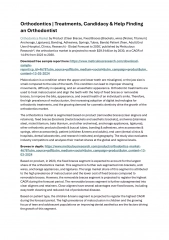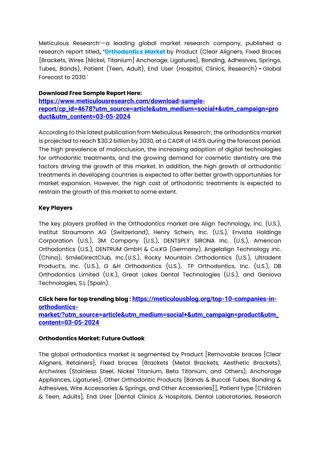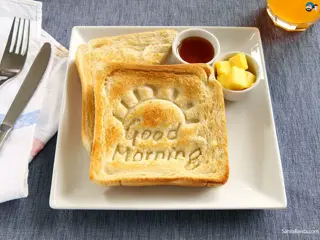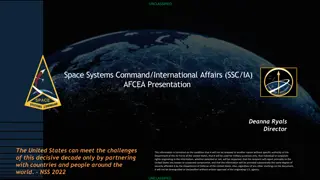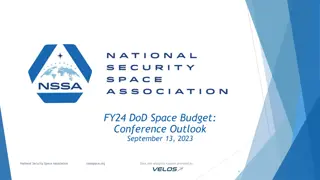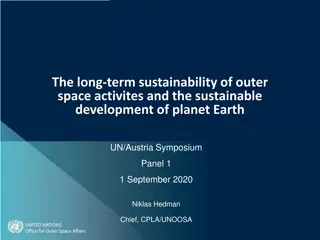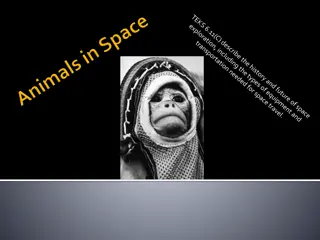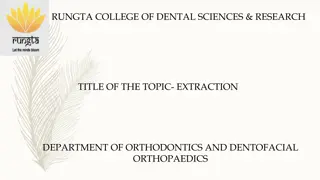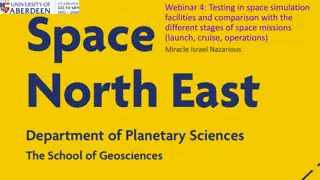Methods of Gaining Space in Orthodontics
Correction of malocclusions often requires creating space for teeth movement. Various methods such as proximal stripping, expansion, distalization, and extraoral or intraoral techniques are utilized. Proximal stripping involves reducing mesio-distal width of teeth surfaces. Diagnostic aids like arch perimeter analysis and Bolton's analysis help in determining the need for proximal stripping. These techniques are crucial for achieving ideal tooth alignment and correcting dental issues.
Download Presentation

Please find below an Image/Link to download the presentation.
The content on the website is provided AS IS for your information and personal use only. It may not be sold, licensed, or shared on other websites without obtaining consent from the author. Download presentation by click this link. If you encounter any issues during the download, it is possible that the publisher has removed the file from their server.
E N D
Presentation Transcript
RUNGTA COLLEGE OF DENTAL SCIENCES & RESEARCH TITLE OF THE TOPIC- METHODS OF GAINING SPACE DEPARTMENT OF ORTHODONTICS AND DENTOFACIAL ORTHOPAEDICS
CORE AREAS Methods of Gaining Space Proximal stripping Expansion Distalization Extraoral Methods Intraoral methods Uprighting of molars Derotation of molars Proclination of incisors PSYCHOMOTOR DOMAIN CATEGORY NICE TO KNOW COGNITIVE PSYCHOMOTOR PSYCHOMOTOR PSYCHOMOTOR PSYCHOMOTOR PSYCHOMOTOR PSYCHOMOTOR PSYCHOMOTOR MUST KNOW MUST KNOW MUST KNOW NICE TO KNOW NICE TO KNOW DESIRE TO KNOW DESIRE TO KNOW DESIRE TO KNOW
1.Introduction 2. Methods of Gaining Space 3. Proximal stripping 4. Expansion as a method of gaining space 5. Distalization : Indications, Contraindications Extraoral Methods Intraoral methods 6. Uprighting of molars 7. Derotation of molars 8. Proclination of Anterior teeth
The correction of many malocclusions requires space in order to move teeth into more ideal locations. Space is required for correction of crowding , retraction of proclined teeth , levelling a steep curve of spee , derotation of anterior teeth and for correction of unstable molar relations. The orthodontist is often faced with the dilemma of how to obtain space required for these corrections.
Proximal stripping is a method by which the proximal surface of the are sliced in order to reduce the mesio-distal width of the teeth. It is also known by synonyms, reproximation , slenderization , disking , and proximal slicing. This procedure is carried out on the lower anteriors it can also be done on the upper anteriors and buccal segments of the upper and lower arches.
Diagnostic aids for proximal stripping Arch perimeter analysis : Arch perimeter or Carey s analysis showing a tooth material excess of 0-2.5mm over the arch length is a diagnostic criteria favouring reproximation. Bolton s analysis : Bolton s analysis revealing an excess of tooth material in either of the arches is an indication to reduce tooth material in that arch.
Intraoral periapical radiograph: It is advisable to carefully analyse an accurately taken intra-oral periapical radiograph of the region. This would give an idea of the enamel thickness and a rough estimate of the amount of enamel that can be removed from the proximal surface, without exposure of the pulp chamber.
Proximal stripping is usually indicated when the space required is minimal i.e,.0-2.5. In the analysis show mild tooth material excess in either of the arches, it is possible to avoid extraction of teeth by performing reproximation. If the Bolton s analysis show mild tooth material excess in either of the arches , it is possible to reduce the tooth material by proximal stripping.
it is also indicated in cases in cases where individual tooth sizes prevent a Class I molar and canine relationship. To obtain a more favourable overbite and overjet.
Proximal stripping is not carried out in young patient, as they possess large pulp chamber, which increases the risk of pulpal exposure. Patient who are susceptible to caries or those who have a high caries index. Generally speaking slenderization should be avoided on small teeth and teeth with enamel hypoplasia.
It should also be avoided in patient who refuse to accept slenderization as a treatment option(informed consent is imperative) Patient with poor oral hygiene and high bacterial plaque index.
It is possible to avoid extraction in borderline cases where 1. space requirement is minimal. A more favourable overbite overjet can be established by 2. eliminating tooth material excess in either of the arches. More stable results can be established by broadening the 3. contact area thereby eliminating small contact points,which can slip and cause rotation of teeth.
A. The stripping procedure creates roughened proximal surface that attracts plaque. B. Caries susceptibility is increased as part of the enamel is remoed,leaing behind a roughened area. C. Patient may experience sensitivity of teeth. D. Improper procedure procedure at the hands of inexperienced operators can results in alteration of morphology of the teeth creating an unnatural appearance of the teeth.
Improper procedure procedure at the hands of inexperienced operators can results in alteration of morphology of the teeth creating an unnatural appearance of the teeth. Loss of contact between adjacent teeth may result in food impaction.
Expansion is one of the non-invasive methods of gaining space. It is usually undertaken in patients having constricted maxillary arch or in patients with unilateral or bilateral crossbite. Expansion can be skeletal or dento-alveolar.
Skeletal expansion involves spilling of the mid-palatal suture while dento-alveolar expansion procedures a dental expansion with no skeletal change. Expansions is brought about by various appliances that incorporate jack screws or by use of spring.
One of the frequently resorted methods to gaining space for orthodontic purposes is by extraction of one or more teeth. Extraction that is undertaken as a part of orthodontic treatment is called therapeutic extraction. Premolars are the most frequently extracted teeth as part of orthodontic treatment. Extraction of one premolar from each quadrant of the jaw provides sufficient space to correct the confronting problem without unduly hampering function and aesthetics.
In addition, the location of premolars in the arch is such that space gained by their extraction can be utilized for correction in both the anterior as well as the posterior segments of the arch. It is not uncommon to extract molars or lower incisors during orthodontic therapy. However, extraction of canines and upper incisor is usually avoided.
Distalization is best done in moderate maxillary skeletal and/or dento-aleolar protrusion. Moderate arch-length deficiencies can be addressed by distalization of the molars. Distalization is recommended when extraction of the maxillary teeth is not indicated. If the mandibular tooth size/arch perimeter relationship does not permit mesial movement of the lower molars, then distalization of the maxillary molars may be considered.
In severe protrusive profiles an severe incisor proclination. In case of high mandibular plane angle and anterior openbites as these features can further worsen. Severe crowding (more than 6mm) Patient with insufficient seating of the Nance button because of reduced palatal vault inclination. Distalization can be brought about by the following methods: Extra-oral methods 1. 2. Intra-oral methods
Headgears deriving anchorage from the cervical or cranial region can be used to distalize molars. The headgear assembly consists of a face bow that is made of an inner and an outer bow. The inner bow is fixed to buccal tubes present on the molars. The outer bow is attached to the extra oral head cap or neck strap.
In order to overcome the drawbacks of extra-oral appliance, various intra-oral appliance to distalize molars were introduced. The appliance are fixed on to the teeth and therefore produce a continuous effect. The following are some of the intra-oral devices used:- Sagittal appliance 1. Pendulum appliance 2. 3. Jones jig
4.Distal jet 5.Acrylic cervical occipital appliance 6.The fast back appliance 7.Transpalatal arch 8.Herbst appliance 9.Jasper jumper
Premature loss of a second deciduous molar or extraction of a second premolar can cause mesial tipping of the first permanent molar. A mesially tipped molar occupies more space than an upright molar. Thus by uprighting these tipped molars, certain amount of space can be recovered. Molars can be uprighted using molar uprighting spring or some form of space regainer.
Rotated posterior teeth occupy more space than normally placed posterior teeth occupy more space than normally placed posterior teeth. Derotation of these teeth hence provide some amount of arch length. Derotation is the best archived with fixed appliances incorporating springs or elastics using a force couple.
Proclination of a retruded anterior tooth results in gain of arch length . This is usually indicated in cases where the teeth are retroclined or in those cases where protracting the anterior will not affect the soft tissue profile.
Textbook of Orthodontics Gurkeerat Singh, Jaypee Brothers; 2nd Edition Orthodontics The Art and Science, S.I Bhalajhi, AryaMedi Publishing; 7th Edition Textbook of Orthodontics Sridhar Premkumar, Elsevier; 1st Edition Orthodontics: Diagnosis and Management of Malocclusion and Dentofacial Deformities O.P Kharbanda, Elsevier; 1st Edition
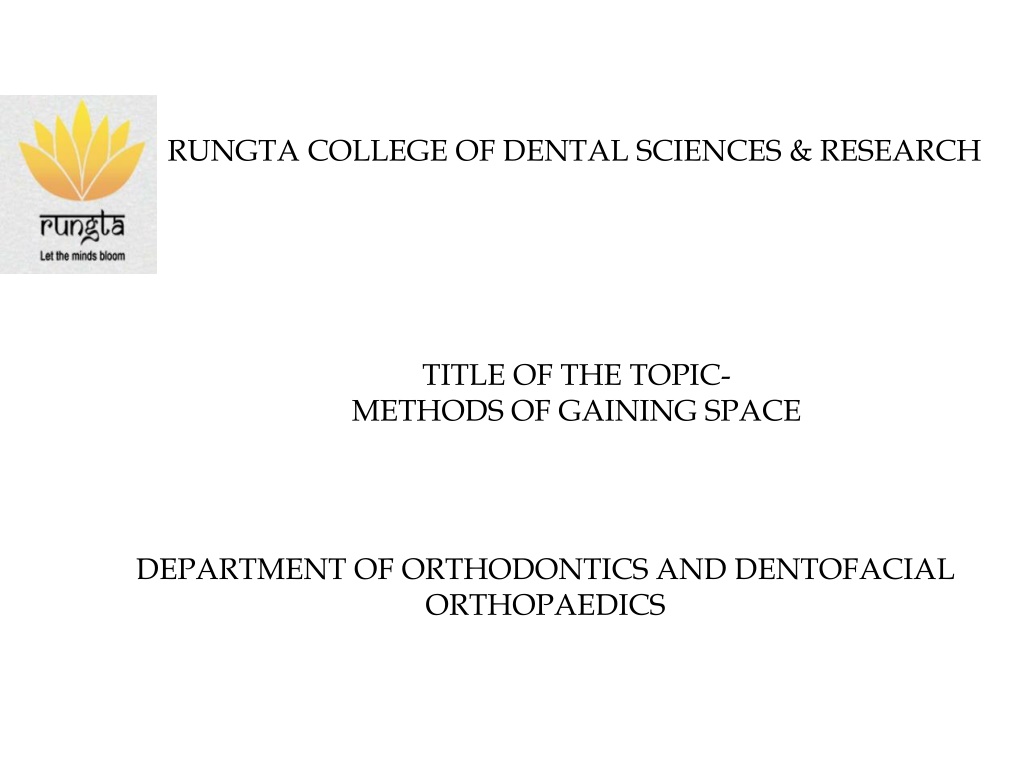
 undefined
undefined

![Read⚡ebook✔[PDF] Linking the Space Shuttle and Space Stations: Early Docking Te](/thumb/21519/read-ebook-pdf-linking-the-space-shuttle-and-space-stations-early-docking-te.jpg)
![READ⚡[PDF]✔ Emerging Space Powers: The New Space Programs of Asia, the Middle Ea](/thumb/21554/read-pdf-emerging-space-powers-the-new-space-programs-of-asia-the-middle-ea.jpg)

